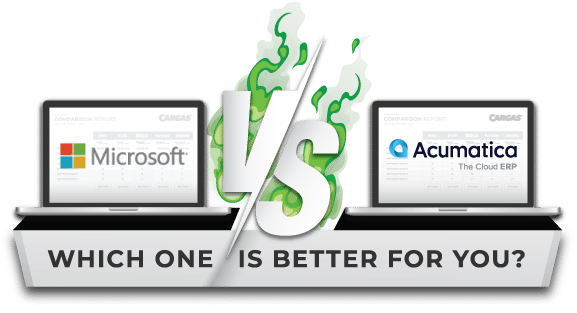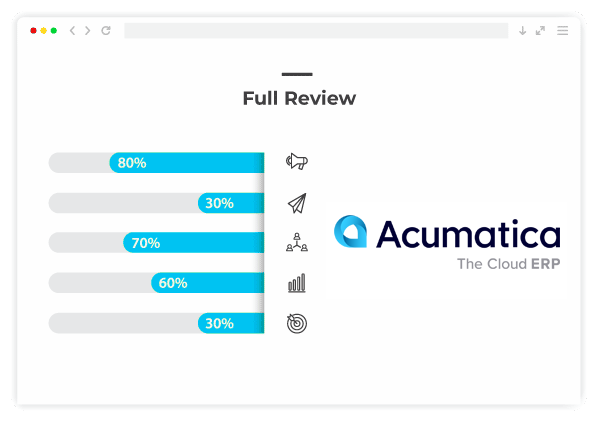COMPARISON | 5 MIN READ
Acumatica vs. Dynamics GP
Which ERP is Best for Your Business?

Acumatica and Dynamics GP are well-known names in the ERP space, but the two solutions are vastly different. Read on to discover which is a better fit for your business.
Deployment and Technology
Acumatica and Dynamics GP represent different eras of ERP software, which is reflected in the solutions’ deployment and integrative capabilities.
Microsoft acquired Dynamics GP, then called Great Plains, in 2001, though the software predated the acquisition by about 20 years. Given its age, it’s no surprise that Dynamics GP was developed as an on-premises solution. Although some cloud features were added later on, Dynamics GP’s architecture may struggle to integrate with modern apps. In fact, Microsoft is preparing to say goodbye to Dynamics GP, recommending that existing customers and future users consider modern ERPs like Business Central instead.
Acumatica is a cloud-native ERP, which means the software was built with remote accessibility in mind. Its modern architecture is designed to scale alongside growing organizations and meet the ever-evolving demands of modern business tech, with updates, maintenance, security, and backups conducted through the cloud. The software’s Application Programming Interface (API) is flexible, which means it can integrate with countless solutions from Acumatica and third-party developers.

Support and Innovation
Dynamics GP’s cost follows the traditional “per-user” model that is still popular with business software today, while Acumatica uses transaction volume to determine the software’s monthly cost.
Dynamics GP is priced per user, with the cost increasing as more users are added to the system. Subscription and perpetual pricing are available, with the former being a monthly cost and the latter being a one-time fee. As Microsoft moves away from Dynamics GP, perpetual licenses will no longer be sold, and subscription licenses will only be available to new users on existing GP instances.
Acumatica’s cost is calculated based on resource usage, not user count. The more unique transactions a company runs each month, the higher the software subscription cost. This makes Acumatica a great fit for small, budget-conscious organizations as well as large businesses in need of multiple user licenses. And, because Acumatica is cloud-based, infrastructure costs are comparatively low.

Ideal Business Types
Because they come from different developers and different eras of technology, Acumatica and Dynamics GP suit vastly different organization types.
Dynamics GP has long been a popular option for small and mid-sized businesses in need of on-premises software. However, with a sunset date and end of support on the horizon, the software is not a worthwhile purchase. Organizations in the market for a new ERP software, especially those with plans for rapid growth, global expansion, or other major changes, are better off investing in Microsoft’s cloud products. This is especially true for business already using a suite of integrated tools that mainly come from Microsoft.
Acumatica is designed for growing businesses, with no user limitations and a flexible cost for organizations of any size. Because of Acumatica’s APIs, it’s easy to customize the software with modules from various developers. Plus, Acumatica comes in six different industry editions—General Business, Retail, Manufacturing, Distribution, Professional Services, and Construction—to offer even more customization to users.
Conclusion: Making the Final Decision
To make the best possible software purchase, it’s important to consider all the benefits and drawbacks of Acumatica and Dynamics GP. If you’re still on the fence, our side-by-side comparison report breaks down the features, pricing, and suitability of these popular ERPs. Fill out the form below to unlock our comparison report and learn more.
Acumatica vs. Dynamics GP Comparison Report

Take advantage of our side-by-side comparison report by entering your information: ►

Let’s Chat
Still have questions? Get in touch with our expert team of software professionals.


